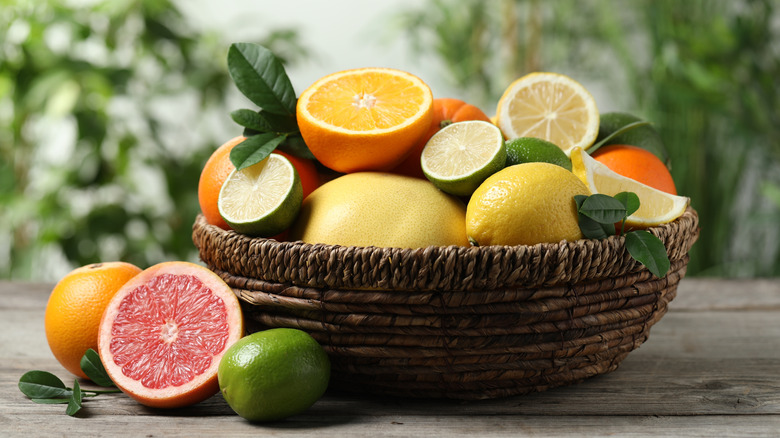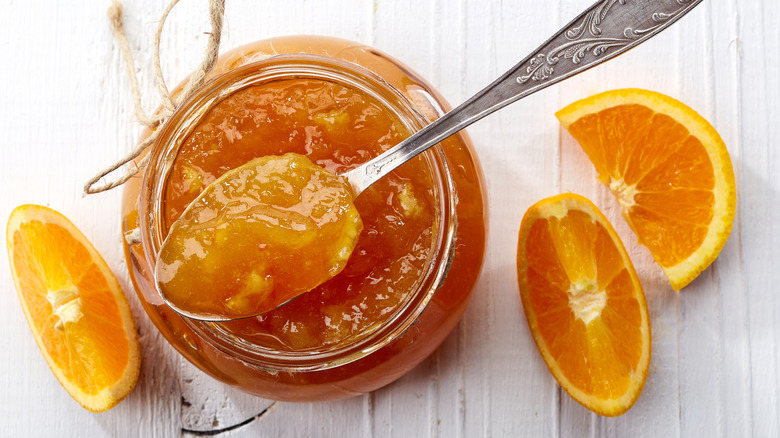Don't Throw Out Citrus Peels When You Could Use Them To Make This Sweet Spread
Citrus fruits liven up our meals with a rainbow of colors and bright flavors. Oranges and tangerines burst in your mouth with juicy sweetness while the tartness of lemons and limes boosts savory and sweet dishes alike, from appetizers to desserts. But unless you're zesting the fruit, the peels usually get tossed in the trash. Try using them instead to make a sweet marmalade, one of the many reasons to stop throwing away citrus peels.
What exactly is marmalade? It's similar to jam (both produced by cooking down fruit with sugar), but marmalade is made with citrus fruit and includes the peel. Orange marmalade is traditional, particularly from bitter Seville oranges, but you can make it with any citrus fruit; from oranges, lemons (like the mellower Meyer lemons), and tangerines to grapefruit, lime, and kumquats. You can also combine different ingredients together, including non-citrus fruit.
The marmalade-making process involves cooking the fruit and peel in water until they're softened then stirring in sugar until completely dissolved. You continue cooking the mixture until it sets. Lemon zest or juice is sometimes added to any flavor because its high pectin level helps the marmalade set and adds extra flavor. Recipes use varying ratios, but a good place to start is a 1:1:1 ratio by weight — such as 1 pound fruit, 1 pound (2 cups) water, and 1 pound (2 cups) sugar. From there, you can adjust to see what works best. It also depends on the fruit, since a tart fruit will likely need more sugar.
Get creative with homemade marmalade
The many options for making your own marmalade all start with the prep. Some recipes say to dice the entire unpeeled fruit before putting it in boiling water to cook, while others say to slice the whole fruit thin with a mandoline instead. Another option is peeling the fruit, cutting the rind into thin strips, cooking them for a while, then adding the cut-up fruit. The best method will depend on if you want thick-cut marmalade with larger peel pieces, or thin-cut with small skinny strips which produces a milder flavor.
Head to the spice rack to give your marmalade more oomph. Vanilla, ginger, cinnamon, and cardamom all blend well with fruit. You can also add a spicy kick with red pepper flakes or cayenne. Introduce an herbal note with mint, savory basil, or rosemary. Want a boozy bite? Pour in some rum, bourbon, vodka, or a fruit-flavored liquor that matches or complements the fruit.
The classic way to have marmalade is slathered on toast, a warm platform for appreciating the flavor of your homemade spread. But you can use it in many other ways too, like filling tarts, cookies, and pastries. If that's not calling to you, try it spooned over ice cream, blended with yogurt, or paired with cheese. The sweet ingredient can boost a marinade for steak or be used to glaze ham, chicken, or salmon. Mix it into a vinaigrette for a fruity boost to your salad topping or try replicating Chinese takeout orange chicken sauce with homemade orange marmalade and just two other ingredients.

